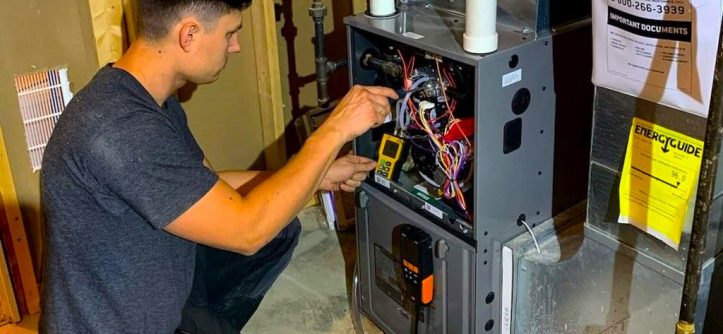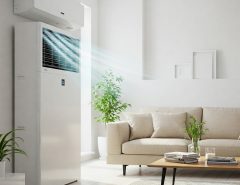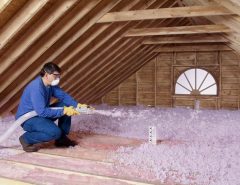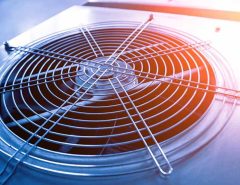Homeowners often experience telltale signs when their furnace is struggling. These include uneven heating, strange noises, unusual odors, increased energy bills, or frequent cycling on and off. Other red flags, such as reduced airflow, a yellow pilot light instead of blue, or inconsistent thermostat readings, may also point to underlying issues. Recognizing these early can help avoid costly furnace repairs.
However, some symptoms are more subtle. For instance, unexpected spikes in utility bills might occur even if the thermostat settings remain unchanged. Dust buildup could suggest filtration or duct issues, while difficulty maintaining a consistent indoor temperature might hint at airflow restrictions or faulty sensors. Paying close attention to these details can make a big difference in catching problems early.
What Causes a Furnace to Stop Working Entirely?
When a furnace stops working altogether, it’s often due to power supply interruptions, such as a tripped circuit breaker or blown fuse, or thermostat malfunctions like dead batteries or miscalibrations. Gas furnaces may fail to generate heat if the ignition system or pilot light isn’t functioning properly. Sometimes, a clogged filter can restrict airflow, overheating the system and triggering a safety shutdown. In other cases, mechanical issues such as a faulty blower motor or limit switch could be the culprit.
While some of these issues can be addressed by homeowners—such as resetting a circuit breaker or checking thermostat batteries—others, like diagnosing ignition system failures, require professional attention. Modern furnaces often provide diagnostic error codes, offering valuable insights into potential problems.
Why Do Some Furnaces Provide Inconsistent or Insufficient Heating?
Furnaces that fail to heat homes evenly can be frustrating, and the causes are often interrelated. Dirty filters may block airflow, preventing heat from circulating properly. Similarly, leaky ductwork allows warm air to escape before it reaches certain areas, while improperly sized furnaces—either too large or too small—struggle to maintain even heating. Issues with key components like the blower or burners can also disrupt performance, as can thermostats placed in drafty areas or in direct sunlight, leading to inaccurate temperature readings.
To address these problems, it may be helpful to consider modern solutions such as zoning systems or smart thermostats, which provide precise control over heating in different parts of the home. Additionally, external factors like poor insulation or drafty windows often contribute to heating inconsistencies and should not be overlooked.
What Leads to a Furnace Making Strange Noises?
Unusual noises from a furnace often signal internal problems. A banging or popping sound might indicate expanding ductwork or delayed burner ignition, while a squealing noise could result from worn blower belts or motor bearings. Rattling sounds may mean loose panels or components, and clicking noises are often associated with a failing ignition system. Even a low humming sound, though subtle, could point to issues with the blower motor or capacitor.
These sounds are more than annoyances—they can lead to larger, costlier repairs if left unchecked. Homeowners should treat them as warning signs and consult a professional promptly. Keeping a log of the noises, including when they occur, can help technicians quickly identify and address the problem.
How Does a Dirty or Clogged Filter Contribute to Furnace Issues?
A dirty or clogged filter creates a cascade of problems for a furnace. It restricts airflow, which forces the system to work harder to circulate air throughout the home. This increased strain can lead to overheating, triggering safety sensors to shut down the system. Furthermore, uneven heat distribution often results, reducing overall comfort. Over time, this added strain shortens the furnace’s lifespan and increases energy bills as the system struggles to perform efficiently.
Regularly replacing or cleaning filters is a simple yet highly effective way to prevent these issues. A well-maintained filter not only supports better furnace performance but also improves indoor air quality, reducing the amount of dust and allergens in circulation.
What Are Common Thermostat-Related Problems With Furnaces?
Thermostat issues, though often overlooked, can significantly impact furnace performance. Incorrect settings, such as leaving the fan in “on” mode instead of “auto,” may cause the blower to run continuously, circulating air without heating it. Poor placement of the thermostat—near drafts, vents, or direct sunlight—can result in inaccurate temperature readings, leading to overwork or underperformance by the furnace. Additionally, dead batteries and calibration errors may prevent the thermostat from functioning as intended, while wiring issues can disrupt communication with the furnace altogether.
Upgrading to a smart thermostat can solve many of these problems by offering advanced features like learning capabilities and remote access. This ensures consistent heating while reducing energy costs.
What Causes a Furnace to Blow Cold Air?
Few things are as frustrating as a furnace that blows cold air during the winter. Often, the cause is simple: the thermostat may be set to “fan” mode, which circulates air without heating it. More serious issues, such as ignition or pilot light failures, prevent the furnace from producing heat at all. Clogged air filters can cause the system to overheat, shutting down the burners while leaving the blower running. Additionally, leaks in ductwork can mix cold air from unconditioned spaces with warm air, reducing its temperature before it reaches the living areas.
Troubleshooting these issues often starts with checking thermostat settings and filters, but ductwork inspections and professional diagnostics may be needed for more complex problems.
Why Does Short Cycling Happen in Furnaces?
Short cycling, where a furnace turns on and off repeatedly without completing a heating cycle, is a sign of deeper issues. Dirty filters, for example, restrict airflow, causing the furnace to overheat and shut down prematurely. Oversized furnaces can heat a space too quickly, leading to frequent cycling. Thermostat malfunctions, whether from poor placement or faulty calibration, may also result in the system turning off too soon. Even blocked vents can disrupt airflow enough to cause this problem.
Addressing short cycling often requires a combination of solutions, from improving insulation to performing a professional load calculation to ensure the furnace is appropriately sized for the home.
What Are the Risks of Ignoring Furnace Maintenance?
Skipping regular furnace maintenance can have costly and dangerous consequences. Over time, dirt, and debris accumulate in the system, forcing it to work harder and reducing its efficiency. This not only raises energy bills but also accelerates wear and tear, leading to more frequent repairs and a shortened lifespan. In some cases, neglect can result in cracked heat exchangers, which pose serious health risks by releasing carbon monoxide into the home. Poor air quality, caused by dirty filters or mold growth in the system, can exacerbate respiratory issues for occupants.
Annual furnace tune-ups are a small investment compared to the cost of major repairs or replacements. They also provide peace of mind, ensuring the system operates safely and efficiently throughout the winter.
What Safety Hazards Can Arise From Furnace Problems?
Furnace malfunctions can lead to significant safety risks. A cracked heat exchanger, for example, can release carbon monoxide, an odorless and potentially lethal gas. Faulty wiring or overheating components may create fire hazards, while gas leaks from malfunctioning valves pose a risk of explosions. Neglected systems can also circulate allergens, mold, and dust, worsening air quality and impacting health.
Installing carbon monoxide detectors is crucial for family safety, and they should be replaced every 5-7 years. Regular maintenance, including a combustion analysis test, can help ensure the system operates safely and efficiently, mitigating these risks.




